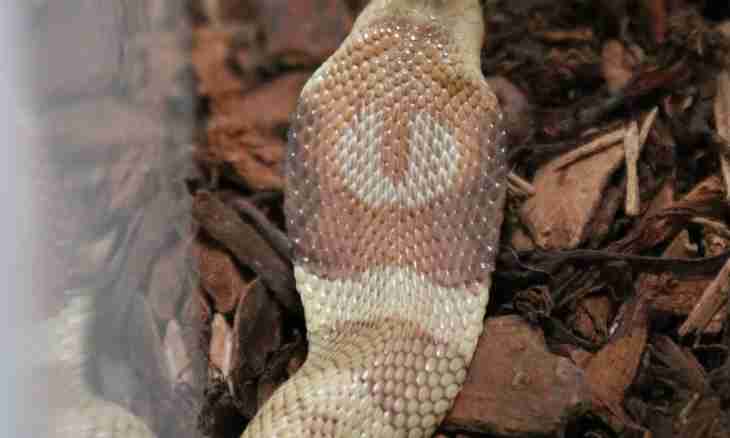Today in the world more than 2500 species of snakes are known. According to official statistics, poisonous of them – about 410 types. Other dragons do not pose any danger for human life.
Snakes guilty though guiltless
In the past the ancient scientists considered that all snakes inhabiting the planet Earth are venomous. Fortunately, now it is known that it not so. However even it is possible to hear opinion today that the vast majority of snakes – are poisonous. For example, carry a harmless medyanka to them, poloz, etc. Quite often because of elementary zoological illiteracy the snakes bringing benefit, but not harm are exposed to mass destruction!
How to distinguish venomous snakes from nonpoisonous?Shape of the head. Today zoologists claim that venomous snakes differ from nonpoisonous, first of all, in a shape of the head. The fact is that the head of a venomous snake very much resembles a spear tip superficially, i.e. is most pointed to a mouth. The head of a nonpoisonous snake, on the contrary, has more rounded shape (it is necessary to remember ears or poloz). Structure of teeth. Venomous and nonpoisonous snakes have absolutely different structure of the teeth. At the snakes posing a direct threat for human life in front in a mouth are located two large and curved (sometimes and straight lines) mobile tooth. When the snake closes the mouth, her poisonous teeth as if a folding marching knife, instantly hide in a mouth. In poisonous teeth the special channel which output opening opens in a front part of tooth is located (near its edge). Output channels of the special glands producing snake poison closely approach the bases of poisonous teeth. Nonpoisonous snakes just have no such teeth! Besides, teeth at venomous snakes reach length of 1-2 cm, are thin. As they mobile also remind the jack-knife, at the time of drawing a sting they hold vertical position in a mouth. Folds in which at the time of closing of a mouth poisonous teeth hide sometimes so carefully mask them that at the time of survey it is possible to make a fatal flaw. If in time not to notice poisonous teeth of a snake, then it is possible to take her for a harmless reptile and to become less careful. Sting traces. After a sting of a venomous snake on skin there are specific traces from teeth having the form of two crescent strips which, in turn, form a semi-oval of small points. On the place of such sting in a front part of the turned-out semi-oval two wounds – traces from two teeth will be clearly visible. Usually from them right after attack of a snake blood exudes. Widespread mistake. Often people believe that snakes "sting" them the sting which is put out from a mouth. It absolutely not so. First, it not "sting", and the doubled language. Secondly, snakes use this gentle and soft body only for a peculiar sense of smell and touch. Language they survey surrounding objects, but do not "sting" people in any way. By the way, language is both at poisonous, and at nonpoisonous snakes! Dangerous dragons. All venomous snakes living on the planet Earth are divided into four families: gadyukovy (gyurza, Eph, viper ordinary, etc.); adders (cobras, coral dragons, etc.); rattlesnakes (shchitomordnik, krotalida and others); sea venomous snakes.

